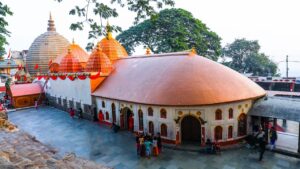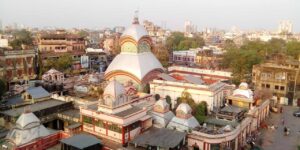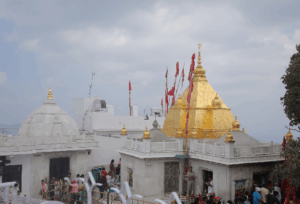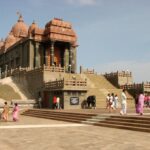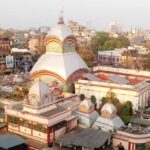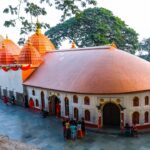Narmada Shakti Peeth: Amarkantak, Madhya Pradesh
Narmada Shakti Peeth, located in the holy town of Amarkantak in Madhya Pradesh, is one of the sacred 51 Shakti Peethas believed to be formed from the fallen body parts of Goddess Sati. It is nestled in the serene Satpura and Vindhya mountain ranges, where the holy Narmada River originates. This place is not just a spiritual center but also a natural paradise, often referred to as “Teerthraj” or the King of Sacred Pilgrimage Sites.
Mythological Significance
The legend of Shakti Peethas originates from the tale of Goddess Sati, who immolated herself in protest of her father Daksha’s insult to Lord Shiva. Enraged and grief-stricken, Lord Shiva carried her corpse while performing the fierce Tandava. To save the universe, Lord Vishnu used his Sudarshan Chakra to dismember Sati’s body, and the pieces fell at various locations, forming Shakti Peethas.
It is believed that the right hip of Goddess Sati fell at Amarkantak, making it the sacred Narmada Shakti Peeth. Here, she is worshipped as Narmada Devi, and Lord Shiva as Bhadreshwar.
Spiritual and Cultural Importance
Amarkantak is deeply associated with the Narmada River, considered one of the seven holiest rivers in Hinduism. According to belief, Narmada originated from the sweat of Lord Shiva and is said to be even more sacred than the Ganga. Bathing in the Narmada at Amarkantak is believed to wash away all sins and grant spiritual merit.
The Shakti Peeth here is a major draw for devotees, especially those following Shakta and Shaiva traditions. The divine feminine energy is said to flow through the region, and many sadhus and saints have meditated here for spiritual enlightenment.
Temple and Surroundings
The temple of Narmada Devi is simple yet spiritually powerful. Located near the Narmada Kund—the very origin point of the river—it offers a peaceful and divine environment for prayer. Pilgrims often visit other nearby temples as well, including the Shri Yantra Mandir, Kapildhara Waterfall, and Ancient Temples of Kalachuri Period.
The natural beauty of Amarkantak, combined with its spiritual atmosphere, creates a perfect place for reflection, penance, and connection with divine forces.
Festivals and Pilgrimage
The Narmada Jayanti festival, celebrating the river’s birth, is the most significant occasion at this Shakti Peeth. Thousands of devotees gather for rituals, chanting, and bathing in the holy waters. Maha Shivaratri, Navratri, and Guru Purnima are also celebrated with devotion and grandeur.
Pilgrims also undertake the Narmada Parikrama, a sacred circumambulation of the Narmada River, which begins and ends at Amarkantak. It is one of the longest religious journeys in India and is believed to bestow immense spiritual blessings.
Conclusion
Narmada Shakti Peeth in Amarkantak is a confluence of divinity, mythology, and nature. With the blessing of Goddess Narmada and Lord Bhadreshwar, it offers devotees not just a place of worship but a journey inward toward purity, devotion, and peace. It stands as a powerful reminder of the sacred feminine energy that sustains and sanctifies the world.

